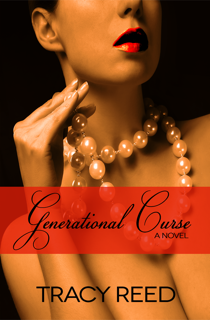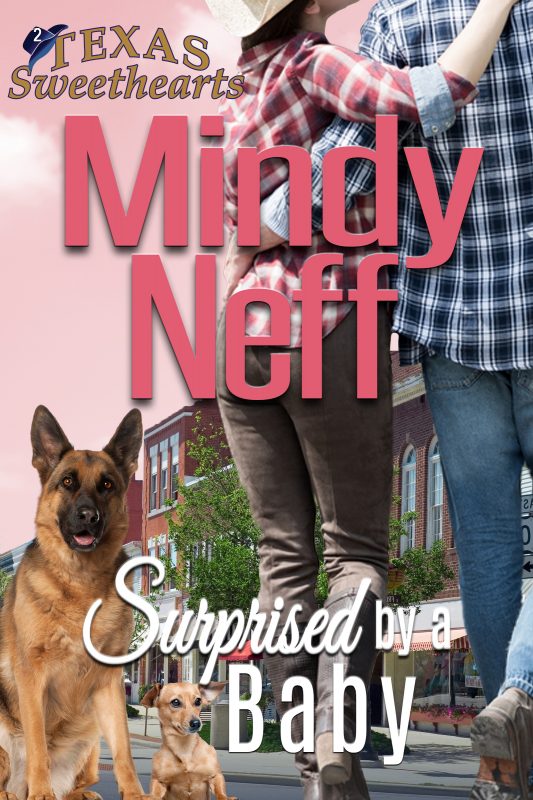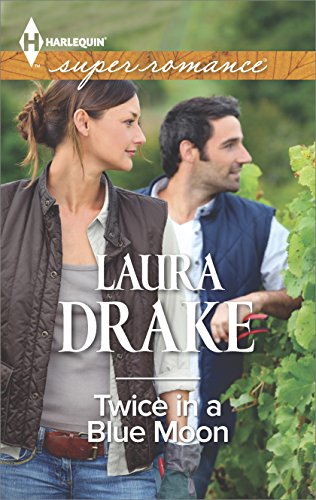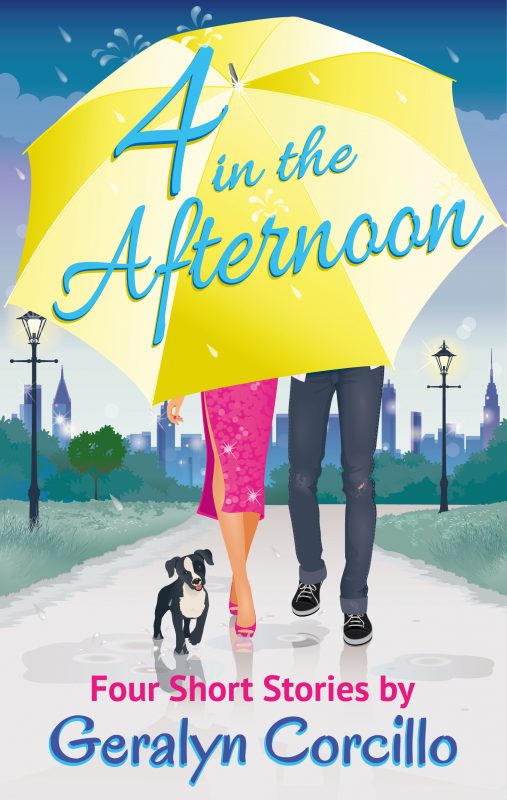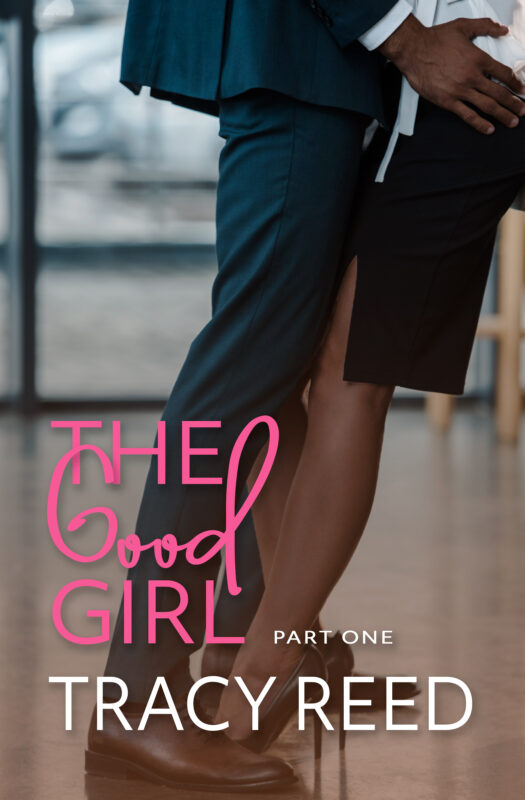Teen Speak
April 25, 2007 by A Slice of Orange in category Archives tagged as Confessions of a YA Writer.
By Alyson Noel
Last Saturday, I took part in an author panel where I was asked—How do you write in such an authentic teen voice? I expected you to be fourteen!
To which I replied—But I am fourteen.
I wasn’t lying, wasn’t trying to be coy about my age or revive a well-worn punch line, because the truth is, for better or worse, deep down inside I’m still stuck in adolescence. I mean, sure I can legally drive, vote, and drink (though not all at once). But just because I have a standing appointment at my hair salon where it takes two hours to recreate the color of my youth, just because, through some enormous fluke, I ended up with a house, a husband, and a handful of credit cards—the usual trappings of a grown up life—that doesn’t mean I’m an adult.
I never feel grown up. I’m not even sure what it means. Grown ups used to be my parents, teachers, and characters I watched on TV. A grown up was June Cleaver with her sweater sets and pearls tucked neatly beneath her apron, a grown up was Lauren Bacall exchanging witty, sophisticated banter with Humphrey Bogart in the old black and white movies my mom made us watch on rainy Sunday afternoons. A grown up always wore shoes that matched her handbag. A grown up was able to make her point without ever resorting to slang.
I don’t own an apron. I live in flip-flops or Frye boots depending on the season, and carry whichever purse holds all of my stuff. I blast my stereo when I drive, singing at the top of my lungs, like I did at sixteen. I over use words like totally and awesome, and when I’m especially enthusiastic am known to say, totally awesome! I still get rock star crushes. I still act immature and giddy when I’m with my friends. I still struggle with a problematic T-zone.
So you can see how getting inside a teenager’s head isn’t all that big of a stretch.
Though I do remember back when I was an authentic teen, back in the days when everyone over twenty-five seemed old, thirty tragically old, and forty downright ancient. And how my mom tried to explain it, telling me how despite the accumulation of birthday candles and wrinkles, deep down inside, she still felt like a kid. And how every time she caught her own reflection, she couldn’t help but think—who’s that old lady?
At the time, I just laughed, thinking she was, well, old.
But now I know she was right. Because depending on the day, I’m 14, 16, or at the very most—25. But rarely, if ever, do I feel grown up.
What about you? To quote my favorite birthday card—How old would you be if you didn’t know how old you was? And how does it shape what you write?
 Alyson Noel is the author of Faking 19, Art Geeks and Prom Queens, Laguna Cove, Fly Me to the Moon, and the upcoming Kiss & Blog (May 2007). You can visit her at: www.alysonnoel.com
Alyson Noel is the author of Faking 19, Art Geeks and Prom Queens, Laguna Cove, Fly Me to the Moon, and the upcoming Kiss & Blog (May 2007). You can visit her at: www.alysonnoel.com
Advice to Myself as a Newbie Author
April 24, 2007 by A Slice of Orange in category Archives tagged as Advice to Myself as a Newbie Authorby Judy Duarte
It seems like only yesterday—or at least last year!—when I walked into my very first OCC meeting, heart pounding, adrenaline pumping and dreams soaring.
So when I was asked to take part in this blog, how could I say no? Still, I had to give it some thought. What advice would I give myself as a newbie author?
This is what I came up with—
If I had it all to do over again, I wouldn’t change a thing, and I’ll tell you why.
As an avid reader of romance, I began to harbor a growing compulsion to write a book of my own until it was impossible to ignore. Trouble was I had no idea what to do or where to start.
However, I’ve come to believe that God doesn’t put a dream on one’s heart without giving a person the power to make it come true.
Call it what you will—a divine gift or just plain serendipity—but some things are much more powerful than the muse.
In 1996, while scanning a schedule for the UC Irvine office of extended studies, I noticed a class titled “How to Write a Romance Novel†and jumped at the chance to learn everything I needed to know…in one single weekend. Imagine that!
Lesson #1 to self: There is something to learn every single day, and being published doesn’t change that.
Had I realized that it would take much longer than a weekend to learn all I needed to know—and I’m still learning, by the way—I might not have stuck around long enough to see my dream to fruition. But I was enthusiastic, driven and hopeful, which is the first thing I wouldn’t change.
At the class, I met several aspiring romance novelists who all shared the same dream I had. One of them, Sheri WhiteFeather, was writing a paranormal time travel. Now, I didn’t particularly read or like paranormals, but there was something that drew me to Sheri. She was the only one in the group who seemed to share the same burning desire to make our dreams come true. So I volunteered to read her work and agreed to send her mine. This, by the way, is the second thing I wouldn’t do differently.
Lesson # 2 to self: When it comes to finding the right critique partner, it’s not a matter of searching for someone who lives near you and has Thursday evenings free. Nor is it a matter of finding someone who writes in the same subgenre you do. It’s finding someone who shares the same drive and who is willing to become a teammate in your own dream to succeed.
Someone in our UC Irvine class mentioned an organization called Romance Writers of America. And can you believe it? There was a chapter in Orange County. After attending my first meeting, I went home in awe. I also blocked out every second Saturday on my calendar for the next year. I knew without a doubt that would be the secret to success.
Before long, I realized there was a wealth of knowledge available via RWA, a treasure trove of information and resources to tap into. So I attended every OCC meeting, signed up for every possible conference and workshop, and learned all I could cram into my brain. Soon the doors began to open up for me.
Lesson # 3 to self: Seize every opportunity to hone your craft and to network with other authors.
Several months later, I headed south to the San Diego State Writer’s Conference, wanting to absorb all I could about the craft of writing. I was also hoping to meet an editor or agent who would take on my work and see me through to publication.
Lesson # 4 to self: The journey will probably take longer than you think, so try to enjoy it. And expect to get discouraged at times—it’s often part of the trip. I suspect there are plenty of unpublished authors out there who are more talented than I am, but if they lack perseverance, they may never see their dreams come true.
At the SDSU Conference, I met Chris/Crystal Green, and she soon joined our critique group. I now had two of the best critique partners in the world. We all lived an hour away from each other, which meant meeting regularly wasn’t possible. But we shared that same burning desire to be published. And we wanted it as bad for each other as we wanted it for ourselves. We went so far as to make a commitment to read and critique each other’s work and get it back within a 24-hour period of time. Soon we thought of each other as the three musketeers: one for all, and all for one!
Once that first book was finished, I honestly believed it was just a matter of time before an agent or editor snatched up my masterpiece and placed me on the New York Times list.
Lesson # 5 to self: Just because God placed the dream to be published on your heart doesn’t mean He won’t require a great deal of work on your part.
Sheri was the first to sell, and it made Chris and I even more determined to follow in her footsteps. Then Chris sold. I was thrilled for them. But then the seeds of doubt began to sprout. Did I really have the talent they’d insisted I had? Would I ever get the call?
There were a few iffy moments, I have to admit.
Lesson # 6 to self: As Gary Provost said: You need three things for success…talent, good luck and persistence. If you have persistence, you only need one of the other two!
Four manuscripts, fifteen conferences, too many contests to remember, a scrapbook full of rejections, and scores of OCC meetings later, the rejection letters became more and more promising, the contest scores closer to the top. Then things really began to click. My third historical romance won the 2000 Orange Rose. And six months later, my first contemporary romance won the Emily contest. In 2001, I became a double Golden Heart finalist.
In May 7, 2001, while alone in the office at work and pumped full of vicodin because of a pending root canal, I finally got the call. Silhouette Special Edition wanted to buy my first book. And thanks to the meds, I had to wait two weeks before I could celebrate with champagne. But what a celebration it was!
Twenty-five sales later, the desire to write and sell is still strong, the wait on word from my editor about a proposal is still nerve wracking, and the call with an offer is still nearly as thrilling as the first. And so is the love of writing.
So if I had it all to do over again, there’s really nothing I would change. But I suspect it’s best that I didn’t know how long it would take. Had I known it wasn’t just around the corner, I might have lost the dream and the drive to succeed.
Lesson # 7 to self and to anyone else who will listen: Never quit dreaming, never quit trying, never quit honing your craft. Dreams come true—but not if you give up.
 An avid reader who enjoys a happy ending, Judy Duarte couldn’t shake the dream of writing a book of her own. In March of 2002, her first Special Edition, COWBOY COURAGE, was released. Since then, she has sold twenty-four more books to Silhouette and two women’s fiction novels to Kensington, including DEAR GOD… which will be published in April of 2008.
An avid reader who enjoys a happy ending, Judy Duarte couldn’t shake the dream of writing a book of her own. In March of 2002, her first Special Edition, COWBOY COURAGE, was released. Since then, she has sold twenty-four more books to Silhouette and two women’s fiction novels to Kensington, including DEAR GOD… which will be published in April of 2008.
Judy’s books have made the Waldenbooks Bestseller lists and have won her a National Reader’s Choice Award. When she’s not cooped up in her writing cave, she’s spending time with her somewhat enormous, but delightfully close family in Southern California. You can contact Judy through her website at: http://www.judyduarte.com/
Reader Review
April 24, 2007 by A Slice of Orange in category Reading tagged as Gillian Doyle, Reader ReviewCarl Hiaasen (see my blog, “Twisted Male Humor”) may be looking over his shoulder wondering who is this new kid on the block.
He should.
James Patterson gave this cover quote for THE RABBIT FACTORY, “Marshall Karp could well be the Carl Hiaasen of Los Angeles — only I think he’s even funnier. THE RABBIT FACTORY will touch your funny bone, and your heart.”
Thanks once again to my friend and bookseller Michelle Thorne (“Bearly Used Books” in La Puente, CA), I found another terrific author. Michelle had given the hardcover to my dh as a gift last year. He loved it, but because it was HIS book and not mine, it ended up in his stash of books instead of my office shelves. He brought it to my attention after I finished another Hiaasen recently.
THE RABBIT FACTORY is centered around murders connected to an L.A. based entertainment mega-conglomerate a la Disney.
There are many reasons why I was drawn into this first novel by Karp–
First, James Patterson’s cover quote comparison to Hiaasen was a like a double endorsement! (Patterson’s WHEN THE WIND BLOWS is my favorite of his books!)
Second, I’ve been a fan of amusement parks since my first visit to Disneyland as a kid living in San Diego. Nowadays, not only can I hear the nightly fireworks from my bedroom window but I hold an annual pass so I can get my fix on a regular basis.
Third, LAPD detectives Mike Lomax and Terry Biggs. But it’s Lomax who gets to have center stage with chapters in his own first-person voice. (Another new trend I like: mixing first and third person.)
Mike Biggs has lost his wife to cancer only six months earlier, but the author handles this situation with just the right balance between grief and poignant memories. At the same time, Mike’s dad — Big Jim — is trying to help Mike move forward and into a new relationship, something Mike is loathe to do.
I know I’m reading a murder mystery. Anything could happen. Especially to the poor protagonist who may or may not fall in love with the wrong person. Or falls for the right one who gets blown up in the end. I hate when that happens.
I want happy endings. I think everyone does, despite the cynical sneer of too many people who turn their noses up at the romance genre. (I KNOW these literary elitists have not read a Meryl Sawyer or Karen Robards or they wouldn’t act that way!)
Without giving anything away (so you will buy this book!), I will say that Marshall Karp gave me every reason to keep coming back for more.

So I was absolutely thrilled to find out that Lomax and Biggs will be showing up again in Karp’s next book, BLOOD THIRSTY, which will be available May 1.
If you are in the Los Angeles area on May 15, Marshall will be doing a drive-by signing at noon at The Mystery Bookstore in Westwood while he’s in town to research his next Lomax and Biggs novel.
Review by:
Gillian Doyle writes paranormal suspense. She invites you to drop by at her blog and say hello.
Writer’s Word
April 20, 2007 by A Slice of Orange in category Archives tagged as Writer's Word.
Writer’s Word: The 25 Lines Per Page Secret!
.
by Jen Crooks
.
In my first column for OCC’s e-zine, I found out a few important things.
The first thing was that it is REALLY fun. I had a blast seeing the stories our OCC authors posted every day. Book voodoo, articles on writing…you name it, our members are writing about it.
The second thing I found out was that, while I might be a goddess with business applications, I don’t know diddly about posting blogs.
My screen shots of all the wonderful things I told you about Word’s save functions did NOT show up. I’m going to have to get training from one of our OCC web goddesses (think online class moderators) so I can add in some visual aids.
So take heart, all of you who feel technology challenged – even the gurus muddle around until someone trains them. My “note to self†for this month’s article: Leave the screen shots off until there is time to have a conference call with Marianne.
Last month, Dana asked me if I could “please, please, please write a blog about how to get 25 lines per page†and I responded “of course I will.†Now mind you, I have never done this setting in my life, mainly because I’m half blind and the traditional manuscript requirements ask for ugly fonts (Times New Roman and Courier New) in addition to the 25 lines per page. Times New Roman makes me particularly crazy because when there is an “r†and an “n†next to each other, to me they look like an “m.†I secretly believe that if my manuscript is in an easy-to-read font like Arial or Tahoma, the editor (that poor soul who reads thousands of pages a week) will be more kindly disposed to buy my book. It hasn’t worked for me yet, but I’ll take all the help I can get.
To get back to Dana’s question, I figured there must just be a quick Paragraph setting (this is located in the Format menu) and it would be a snap – four or five steps at the most. The Paragraph dialog box is one of my favorite places in Word. . .there is so much to do here! All you have to do is select the text you’d like to change (hit Ctrl + A on your keyboard to select the entire document) and go to Format. Then Paragraph.
For example, this is where most people go to set Line Spacing to single, double or 1 ½ space. Of course, you can do those with key strokes too:
Ctrl + 1 = Single space
Ctrl + 2 = Double space
Ctrl + 5 = 1 ½ space
While in Paragraph, you can choose the Indent setting of “First line†and indent the first line of each paragraph in your manuscript (the most common setting is .5 inch).
That pesky “Widow/Orphan control†feature is located here. This is what makes all the lines in a paragraph stay together, even when you want them to separate to help you get 25 lines on a page. I have people tell me all the time that they can’t find this sucker – it is located on the second tab in the dialog box, titled “Line and Page Breaks.†The default setting in Word is that the “Widow/Orphan control†is set to ON. (Obviously no one polled us writers when they were deciding which features made the cut in Word.)
Are you catching on yet that the Paragraph dialogue box is a veritable party for us writers?
The last thing you need to know about before I give you “the 25 line secret†in a step-by-step list is that margins and font size – even font type – matter when you are trying to get your manuscript formatted to have 25 lines on a page. That being said, all of my examples use Word’s default margins of Top/Bottom – 1†and Left/Right = 1.25 inch because I like the extra white space. I know, I know…the rules that date back to 1980 say 1†margins only – once you learn how to use your Paragraph settings you can be the Word Dominatrix and MAKE your margins work for you.
Note: For anyone who has never changed their margin settings, there are two easy ways to do it: click on the File menu and choose Page Setup OR double click on the vertical ruler to the left of the document when you are in Print Layout View. You will not see the ruler to the left unless you are in Print Layout View.
I was looking around on the internet to see “how everyone else was doing it†and I saw at least four different methods for how to get 25 lines on a page, zero of which worked for me. I saw one blog where a guy actually went through a formula to calculate the 25 lines. There will be no formulas in my writer-friendly Word column but if you would like to see this craziness, I’ve included the link. (If you follow the link below, just scroll down a bit to see what Allen, the math wizard, advises. Bleck!)
The easiest way to achieve the hallowed 25 lines per page is to follow the steps below:
I used the following font combinations:
Courier New – 14 pt
Arial – 12 pt
(The dreaded) Times New Roman – 12 pt
Right about now, I’m hoping that you see that your font doesn’t really matter – this is ALL about the Paragraph setting.
1. Select all the text in your document that you want to change (for example, you’ll probably omit your title page)
2. Go to Format menu. Then Paragraph.
3. If you haven’t turned off the Widow / Orphan control, do it now
4. On the Indent and Line Spacing tab, go toward the bottom of the dialog box where it says “Line Spacing:†– click the drop down arrow and choose the word “Exactlyâ€
5. In the “At:†field to the right of where it now says “Exactly,†type in “25 ptâ€
6. Click OK
You have now achieved manuscript formatting perfection!
By day, Jen Crooks manages the sales and marketing for a national training firm. After 12 years as a corporate software trainer, it’s nice for her to be able to sit down while she works. By night, Jen writes women’s fiction, chick lit and short stories as Jenny Hansen. She has been a member of OCC since 2001 and has served on OCC’s Board of Directors in a variety of capacities. She is currently the Contest Coordinator for the 2007 Orange Rose Contest for Unpublished Writers.
CONFESSIONS OF A PODCAST GODDESS
April 19, 2007 by A Slice of Orange in category Archives tagged as Confessions of a Podcast GoddessNo, that’s not the name of a new animated cartoon series, it’s what can flush your podcast–audio or video–down the toilet in ten seconds flat. You’ll lose your audience before you have one if they can’t hear or understand you because of poor quality audio. Think of it this way: How many times have you wanted to dump an entire giant box of popcorn on the person behind you because they wouldn’t stop crunching throughout the entire film? More than likely it ruined the film for you because you couldn’t hear half of what was happening on the screen.
First rule in podcasting: Make sure they can hear you.
I learned this lesson the hard way.
The unidirectional mike I bought was cool, but the computer connection was wrong (the salesman sold me mono instead of stereo). I bought an adapter plug, but my troubles weren’t over. When I recorded my voice, I heard crackly static that made me sound like an old radio serial. A cheap sound card was the culprit, I found out, but not before I went crazy pushing every button and sliding every bar on my sound mixer trying to get rid of the “noise.” I had to have a new sound card installed, but it was worth it. I had cool, clear sound.
Now for the fun part: Recording my podcast!
You create that important first impression with your voice and make the audience want to hear more. You want your voice image to be natural. Don’t focus on your “low, husky” voice or try to be sultry à la Jessica Rabbit. Be aware that speaking at the very bottom of your pitch range can result in voice problems from the strain. At the other end of the spectrum, when you’re under stress, such as a first date or recording your first podcast, very often “singsong” or whine patterns from your childhood show up in your voice.
To improve your voice, focus on the bridge and sides of your nose down to and around your lips. This area is called the “mask” by voice experts because in ancient Greece stage actors spoke through masks which covered this part of their faces and amplified their voices. By producing sound through this part of your face, your voice will open up and become flexible, giving your voice expression and warmth. Speaking through the mask gives your voice a resonance that will seduce as well as impress your audience into coming back for more!
Bonus tip: Practice by reading out loud to the man in your life from your favorite sexy novel and don’t forget the sensual sound effects. I call it Instant Foreplay. Here’s a video podcast I made on the subject:
http://www.dailymotion.com/Jina_B/video/x1682k_instant-foreplay-with-spice-audio-b
Tune in next month for Part 3 of Confessions of Podcast Goddess!
 Jina Bacarr is the author of The Blonde Geisha and coming in July 2007, Naughty Paris. Jina writes erotic adventure for Spice Books. “Get Caught in the Act.”
Jina Bacarr is the author of The Blonde Geisha and coming in July 2007, Naughty Paris. Jina writes erotic adventure for Spice Books. “Get Caught in the Act.”Affiliate Links
A Slice of Orange is an affiliate with some of the booksellers listed on this website, including Barnes & Nobel, Books A Million, iBooks, Kobo, and Smashwords. This means A Slice of Orange may earn a small advertising fee from sales made through the links used on this website. There are reminders of these affiliate links on the pages for individual books.
Search A Slice of Orange
Find a Column
Archives
Featured Books
GENERATIONAL CURSE
Kyla James is a beautiful, confident woman. She has two vices, champagne and sex with married men.
More info →4 IN THE AFTERNOON
Dates, dogs, football, monsters in the attic, misunderstandings, and unexpected discoveries abound in these four romantic comedy short stories.
More info →THE GOOD GIRL PART ONE
Gabriella Townsend is by all definition a "Good Girl." Her life is about to change.
More info →Newsletter
Contributing Authors
Search A Slice of Orange
Find a Column
Archives
Authors in the Bookstore
- A. E. Decker
- A. J. Scudiere
- A.J. Sidransky
- Abby Collette
- Alanna Lucus
- Albert Marrin
- Alice Duncan
- Alina K. Field
- Alison Green Myers
- Andi Lawrencovna
- Andrew C Raiford
- Angela Pryce
- Aviva Vaughn
- Barbara Ankrum
- Bethlehem Writers Group, LLC
- Carol L. Wright
- Celeste Barclay
- Christina Alexandra
- Christopher D. Ochs
- Claire Davon
- Claire Naden
- Courtnee Turner Hoyle
- Courtney Annicchiarico
- D. Lieber
- Daniel V. Meier Jr.
- Debra Dixon
- Debra H. Goldstein
- Debra Holland
- Dee Ann Palmer
- Denise M. Colby
- Diane Benefiel
- Diane Sismour
- Dianna Sinovic
- DT Krippene
- E.B. Dawson
- Emilie Dallaire
- Emily Brightwell
- Emily PW Murphy
- Fae Rowen
- Faith L. Justice
- Frances Amati
- Geralyn Corcillo
- Glynnis Campbell
- Greg Jolley
- H. O. Charles
- Jaclyn Roché
- Jacqueline Diamond
- Janet Lynn and Will Zeilinger
- Jeff Baird
- Jenna Barwin
- Jenne Kern
- Jennifer D. Bokal
- Jennifer Lyon
- Jerome W. McFadden
- Jill Piscitello
- Jina Bacarr
- Jo A. Hiestand
- Jodi Bogert
- Jolina Petersheim
- Jonathan Maberry
- Joy Allyson
- Judy Duarte
- Justin Murphy
- Justine Davis
- Kat Martin
- Kidd Wadsworth
- Kitty Bucholtz
- Kristy Tate
- Larry Deibert
- Larry Hamilton
- Laura Drake
- Laurie Stevens
- Leslie Knowles
- Li-Ying Lundquist
- Linda Carroll-Bradd
- Linda Lappin
- Linda McLaughlin
- Linda O. Johnston
- Lisa Preston
- Lolo Paige
- Loran Holt
- Lyssa Kay Adams
- Madeline Ash
- Margarita Engle
- Marguerite Quantaine
- Marianne H. Donley
- Mary Castillo
- Maureen Klovers
- Megan Haskell
- Melanie Waterbury
- Melisa Rivero
- Melissa Chambers
- Melodie Winawer
- Meriam Wilhelm
- Mikel J. Wilson
- Mindy Neff
- Monica McCabe
- Nancy Brashear
- Neetu Malik
- Nikki Prince
- Once Upon Anthologies
- Paula Gail Benson
- Penny Reid
- Peter Barbour
- Priscilla Oliveras
- R. H. Kohno
- Rachel Hailey
- Ralph Hieb
- Ramcy Diek
- Ransom Stephens
- Rebecca Forster
- Renae Wrich
- Roxy Matthews
- Ryder Hunte Clancy
- Sally Paradysz
- Sheila Colón-Bagley
- Simone de Muñoz
- Sophie Barnes
- Susan Lynn Meyer
- Susan Squires
- T. D. Fox
- Tara C. Allred
- Tara Lain
- Tari Lynn Jewett
- Terri Osburn
- Tracy Reed
- Vera Jane Cook
- Vicki Crum
- Writing Something Romantic
Affiliate Links
A Slice of Orange is an affiliate with some of the booksellers listed on this website, including Barnes & Nobel, Books A Million, iBooks, Kobo, and Smashwords. This means A Slice of Orange may earn a small advertising fee from sales made through the links used on this website. There are reminders of these affiliate links on the pages for individual books.



